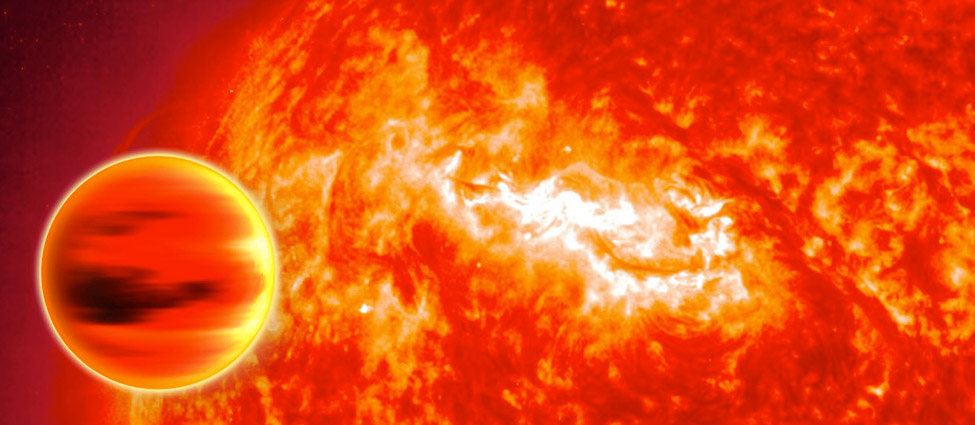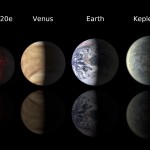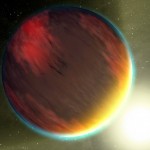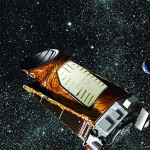Worlds beyond the solar system
Planet hunters have found hundreds of exoplanets, but none just like Earth

The discovery of exoplanets — worlds beyond our solar system — is heating up, and scientists are racing to find the first Second Earth.
ESA/C. Carreau
Once upon a time — about 20 years ago — kids in school learned about nine planets: Mercury, Venus, Earth, Mars, Jupiter, Saturn, Uranus, Neptune and Pluto. The Nine orbited the sun, and they were the only planets that mattered. Any others existed in the imagination of children or in science fiction books and movies. The Star Trek crew, for instance, regularly visited distant worlds populated by aliens. And the good guys in Star Wars fled to forested or icy planets to escape the bad guys in a galaxy far, far away.
Your parents, however, probably remembered the names and order of the real planets in our solar system by reciting the sentence: My Very Excellent Mother Just Served Us Nine Pizzas. The first letter of each word stood for a planet, and their order reflected the declining proximity of those planets to the sun — Mercury, Venus, Earth and so on.

Discoveries of additional exoplanets, or planets outside the solar system, soon followed. And now, new exoplanets are introduced so regularly that it’s hard to believe anyone ever doubted they were out there.
But in the early 1990s, many scientists remained skeptical that such planets existed, or if they did exist, that it would be possible to see and study them.
“At the time, a lot of people didn’t believe [the exoplanets] were planets; they thought they might be weird stars,” says Sara Seager, a planet-hunting astronomer at the Massachusetts Institute of Technology in Cambridge. Other scientists believed that even if planets were out there, attempts to study them “wouldn’t go anywhere.”
“There was no discussion among astronomers about planets or life in the universe,” says Geoffrey Marcy, an astronomer at the University of California, Berkeley and a pioneer in the field of exoplanet discovery. “Both were considered to be flaky, pseudoscience topics — similar to looking for a fountain of youth or moving objects with your mind. In the 1980s and mid-1990s, we didn’t know of any technology that could detect planets around other stars.”

No two worlds seem to be the same, and they challenge what we know about solar systems. “All these systems are almost like a children’s game,” Seager says, “where anything goes — any planet you can imagine — in terms of mass and distance from its star. It’s really incredible.”
An exceptional planet and solar system
Exoplanets come in a variety of sizes and distances from their stars. So far, all offer surprises. Many of the giant gas planets, as big as or bigger than Jupiter, race around their stars so quickly that a year on those worlds may last only a few Earth-hours or days. Some exoplanets are also so hot that most metals, if present, would melt and flow like water. In 2010, scientists reported that on a planet called HD 209458b, burning winds probably whip around at many times the speed of sound on Earth.
Despite the wild diversity of exoplanets, astronomers have not turned up another Earth. An Earth-like planet needs to be rocky, about the same size as our world, possess an atmosphere and have the right temperature to hold liquid water. Astronomers can estimate a planet’s temperature by knowing the distance between the planet and its star. If a planet were too close to its star, soaring temperatures would vaporize any water on the world. If a planet were too far, frigid lows would freeze water. Astronomers talk about searching for exoplanets in the “Goldilocks zone,” an orbiting distance that would leave the planet not too hot and not too cold.
In December 2011, scientists introduced a planet solidly in this zone — but that world was far larger than Earth. A few weeks later, just before Christmas, Earthlings were introduced to Kepler-20e, the first confirmed exoplanet smaller than Earth. This newfound planet is the right size, but far too close to its star to have liquid water.
Even when an Earth-like planet emerges, it may not be habitable. Venus and Earth, after all, probably look similar from a distance: They’re about the same size, and each has an atmosphere. However, Venus’ atmosphere is crushingly dense and unable to support life.

“Planets we didn’t even know existed are the most common,” Seager explains. “They weren’t really predicted to be out there, and we didn’t even dream of this type of possibility. It’s humbling.”
Perhaps the most surprising discovery, though, is that alien planetary systems look so — well, alien. Says Seager, “It’s unsettling that we haven’t found anything like our solar system.”
“Every time there’s a new discovery, we never seem to find copies of the solar system,” says David Charbonneau, a planet hunter at the Harvard-Smithsonian Center for Astrophysics in Cambridge, Mass. “Instead, we find things that are not just different, but completely at odds with our understanding of the physics of how planets form.”
In September 2011, for example, Kepler astronomers introduced a faraway exoplanet that orbits two stars — which means that world has two sunrises and two sunsets (and double shadows). And Kepler-20e, found in December, resides in a solar system of five planets that stay so close to their star, their orbits could fit inside Mercury’s.
Watching for wobbles
Planet hunters may not have found an alien system that looks like home, but it’s not from a lack of trying. In the mid-1990s, astronomers typically used ground-based telescopes to hunt for exoplanets. These instruments watched stars, looking for wobbles.
A star’s gravity keeps a planet close by, but the planet’s gravity has an effect on the star, too. As a planet orbits a star, its gravitational tug makes the star wobble a little. On Earth, astronomers use telescopes to watch stars carefully — if a star wobbles, then a planet may be nearby. Most giant, close-in exoplanets have been discovered this way.
In 2009, NASA launched a satellite that jumpstarted a new period of discovery for planet hunters. Called the Kepler Space Telescope, it looks like a 4.5-meter-long (15-foot-long) futuristic trashcan racing around the sun. It has identified thousands of bright blips in the dark sky that might be planets. These need further study to be confirmed, but the early results are exciting. (And as its name suggests, Kepler-20e was discovered by this telescope.)
Kepler and other projects, like a French-led mission called CoRoT, look for exoplanets that transit, or move between their home stars and Earth. When a planet transits, it blocks some of the light coming from the star. The phenomenon is similar to how a bug blocks light from a bulb as it buzzes by, or how the moon blocks sunlight during a solar eclipse. After the planet passes its star, that star brightens again. A telescope measures starlight and uses the changes caused by a transit to estimate the planet’s size.
Kepler revolutionized the search for exoplanets. Already it has recorded the light from more than 100,000 stars. Still, scientists have already run up against the telescope’s limitations. It watches only a patch of sky — roughly equivalent to the size of your hand outstretched at arm’s length.
Are we alone in the universe?
If scientists find Earth-like planets, simply knowing they exist won’t be satisfying. Scientists will want to figure out which planets have atmospheres and might support living organisms.
“We would love to analyze the surfaces and atmospheres of other planets to hunt for signs of life,” explains Marcy at Berkeley. “Do they commonly have life on them? If so, is the life usually just simple, such as bacteria, bugs and bamboo? Or does life normally progress … toward more complex forms, such as fish, birds and mammals? And how common is intelligent life in the universe? Are there intelligent species around one in every 100 stars, or around one in every one million stars? Are we humans a common result of evolution or are we a rarity in the universe?”
Like all good questions, Marcy’s are easier to ask than answer. Plus, getting the right tools to answer those questions is a daunting task. Building and launching a space telescope like Kepler required decades of planning and lots of money. Scientists like Seager, Marcy and Charbonneau aren’t only searching for planets, they’re also searching for faster and less expensive ways to do it. Thanks to their efforts, and other astronomers searching the skies, exoplanet discovery is a field that’s finally taking off.
“Often in science, kids are given the impression that we know everything, and their duty is to catch up and learn all the facts out there in some dusty book,” Charbonneau says. But especially in astronomy, he says, that’s not the case: The biggest questions remain unanswered, and future generations will continue to look for answers.
“The thing that really excites me is that we cannot yet point to a star and say that one has a planet that might have life on it,” Charbonneau says. “That’s one of the most interesting questions in all of science, and we don’t know the answer.”
Power words
exoplanet Also called an extrasolar planet. A planet that orbits a star outside the solar system.
radius A straight line from the center to the circumference of a circle or sphere.
mass The quantity of matter that a body contains.







